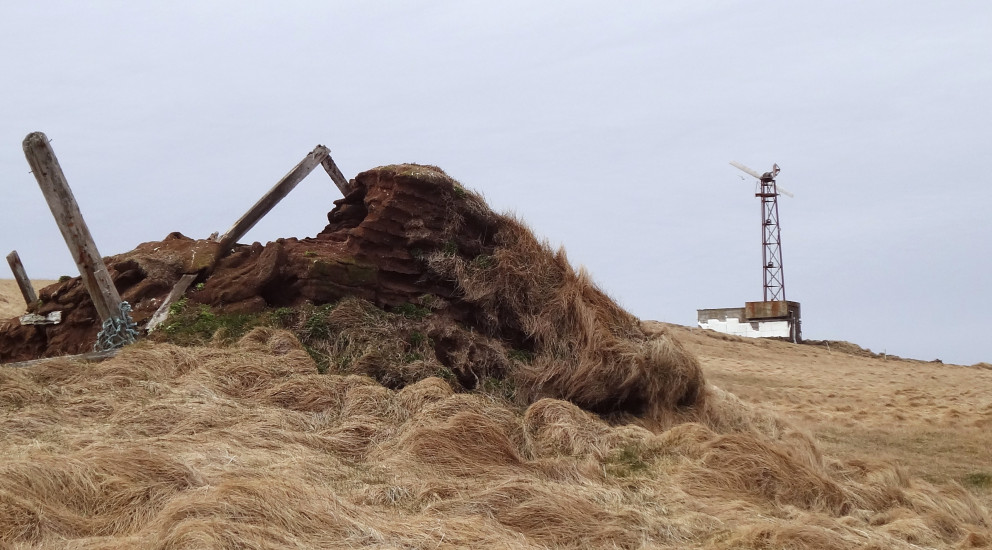The Windmill
In 1982, Raunvísindastofnun Háskólans (the University of Iceland’s Institute of Science) installed a wind turbine in Grímsey.
The island has neither a natural source of hot water nor any other eco-friendly method of producing electricity, so a diesel power station is used to generate electricity and heat water on the island.
The wind turbine was designed to produce heat using a so-called water brake and was expected to generate ½ ton of 70°C hot water per hour in wind speeds of around 7 meters per second.
The residents of Grímsey built a house for the turbine, installed a 14-ton water tank, and laid double water pipes to the two southernmost houses on the island. A 10-meter-high mast was constructed on top of the building by Vélsmiðjan Oddi in Akureyri.
The project was a pilot experiment, and if it succeeded in producing enough hot water for the two houses, the plan was to install additional wind turbines to supply hot water for all the residents of Grímsey.
However, the attempt failed when the wind turbine broke down shortly after it was built. Today, you can see what remains of the turbine on a hill in the southwestern part of the island.



